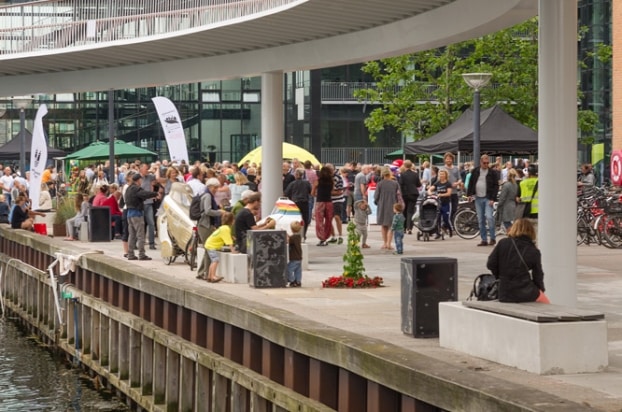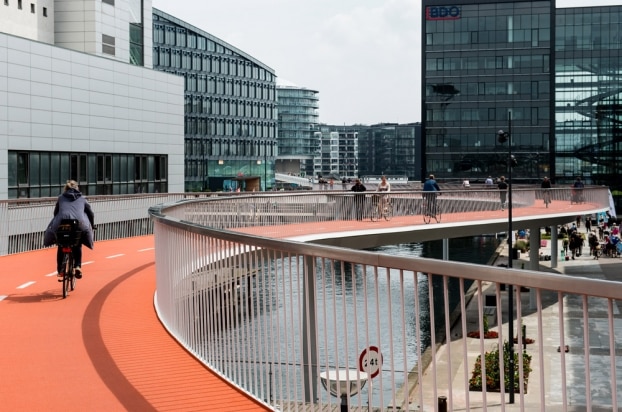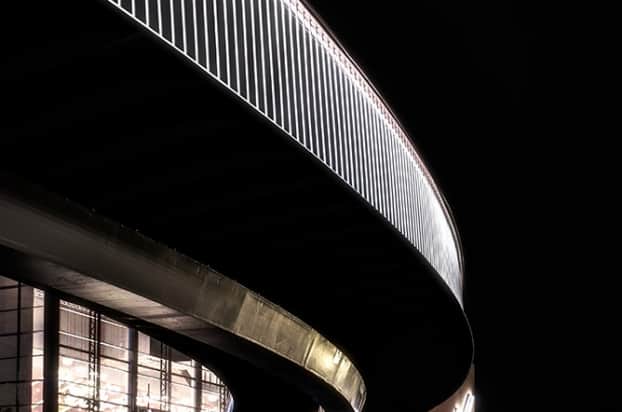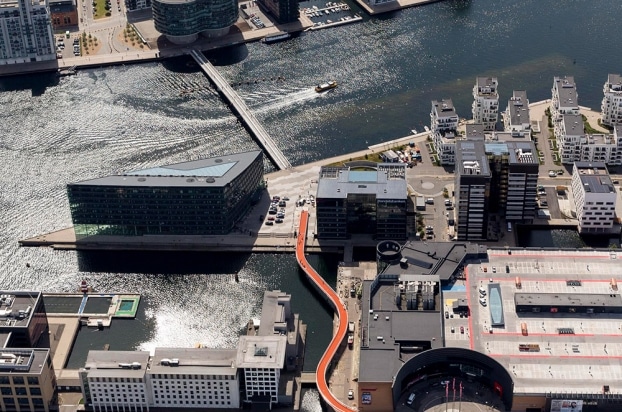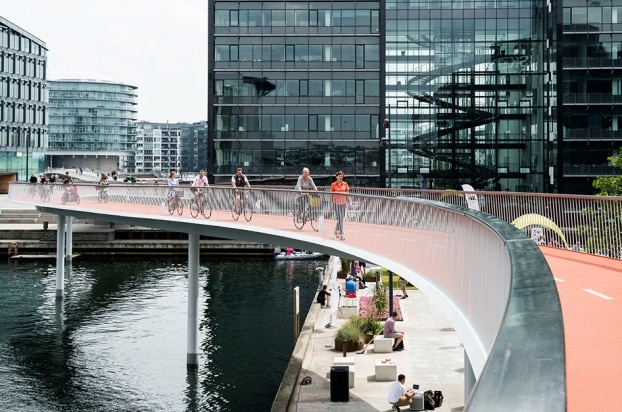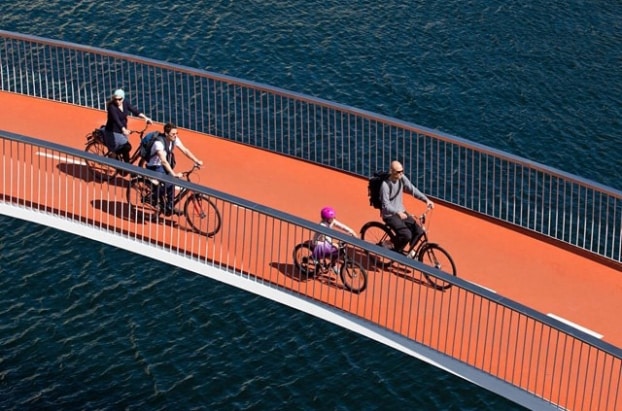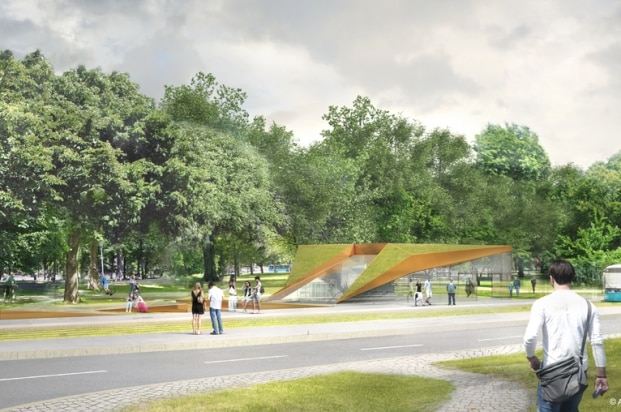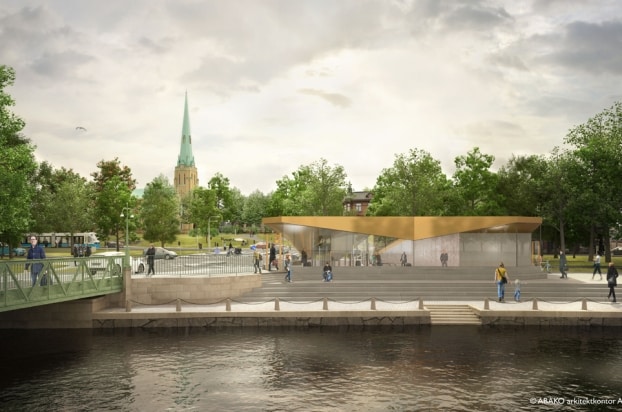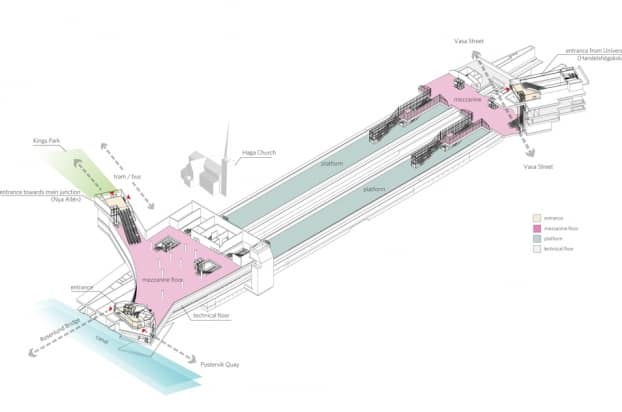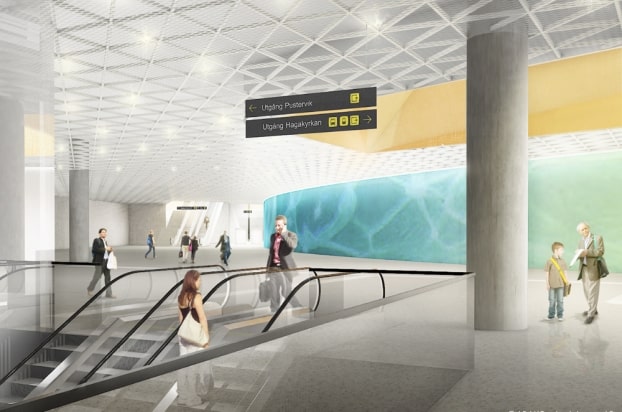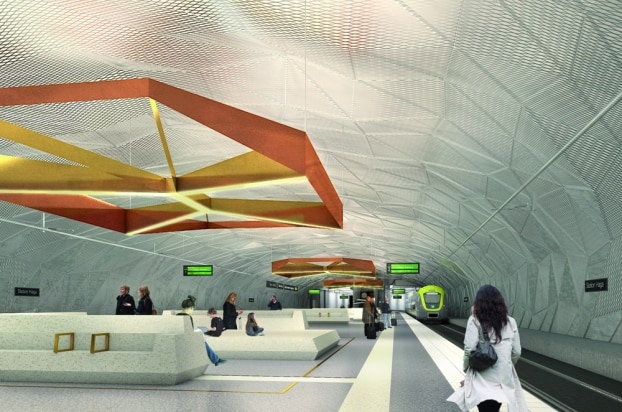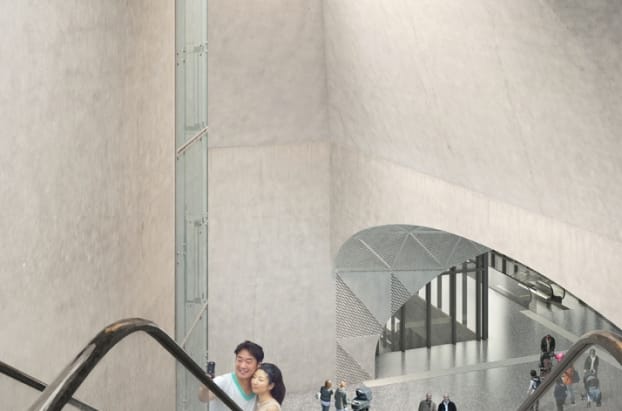The Bicycle Snake, Copenhagen, Denmark
Dissing+Weitling
The Bicycle Snake
The area around Fisketorvet shopping center was characterised by a particular problem – two distinctive groups of users, each with conflicting interests, cyclists and pedestrians. The cyclists needed to get easily from Kalvebod Brygge to Islands Brygge. They wanted to use the connection daily and wanted a safe passage through the area without it conflicting with the many pedestrians using either Fisketorvet shopping center or just staying in the public bath area. The problem was rooted not solely in the two groups’ movement patterns, but also in the physical conditions that require 90-degree turns, blind corners and stairs. Furthermore the area lacked physical separation of bicycle paths and sidewalks.
DISSING+WEITLING won the tender for a new link to solve these issues. D+W proposed a long ramp/bridge that takes off from Havneholmen and continues in a winding course, which reduces the slope, along Fisketorvet towards the shopping center’s main entrance.
The 235 m long ramp is an interesting object in the area and ensures the complete separation of cyclists and pedestrians. The cyclists can pass quickly and easily through the area, while experiencing unique and exciting views. Finally, the elevated road allows pedestrians to use the entire wharf avoiding perilous situations.
The ramp provides a unique harbour outlook during sunny days and a shelter during rainy days. The owner of Fisketorvet is able to use the now more quiet area to establish a more recreational space which will eventually heighten the overall area’s quality.
The solution is reasonable and simple from an engineering point of view. The construction phase was fast and there was no need for lifting heavy loads as the distance between the columns is fairly modest at approx. 17m.
The Bicycle Snake was completed in June 2014 and is an extension of DISSING+WEITLINGs Bryggebro (Quay Bridge).
Haga Station, Gothenburg, Sweden
ABAKO arkitektkontor AB + JSA Architecture Ltd
Haga Station is one of three underground stations on the proposed West Link rail project crossing central Gothenburg. Construction will start in 2016 -2018 and the railway is expected to be operational in 2026.
Haga Station is situated 25-30 meters below ground in a highly sensitive urban environment. It will be constructed directly under a historic park with many mature trees, a 19th century church and the University of Gothenburg’s original library. The alignment also passes under the old city moat and cuts through the remains of 17th Century fortifications.
Two parallel station tunnels each contain 250 meter long island platforms. Escalators and lifts are concentrated at the platform ends and connect to spacious sub-surface concourses. There are three entrances: one in the south is to be integrated into a new university building and two in the north which will provide interchange with tram and bus services, as well as access to the city centre. The station is largely tunneled in rock, but the northern part will be in a cut and cover concrete box, producing complex interfaces between the two forms of construction.
Important design features include:
• Wide platforms, without columns, provide clear sightlines and good orientation for passengers.
• Glazed lanterns bring natural light down into the main passenger concourses.
• Station entrances are open, light and contemporary in design, while remaining responsive to their historic surroundings.
• The cavernous platform tunnels are clad in prismatic metal mesh and, with concealed lighting, create a sense of drama and spaciousness.
• Entrances and other openings use distinctive materials such as brass and copper to emphasize the transition between ground-level and the subterranean environment and to provide visual continuity.
• Seating and other passenger facilities have been grouped into attractive waiting areas along the length of platforms.
Architects:
ABAKO arkitektkontor AB, Gothenburg
JSA Architecture Ltd, London

